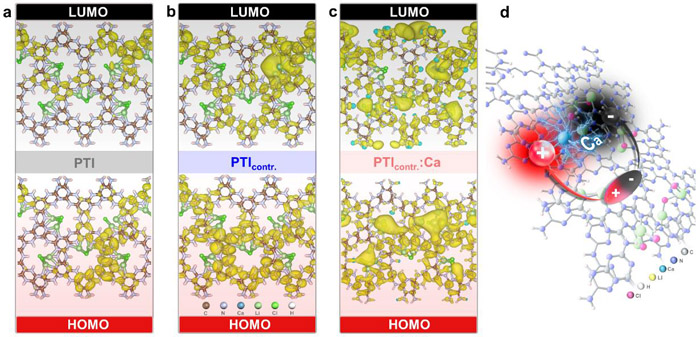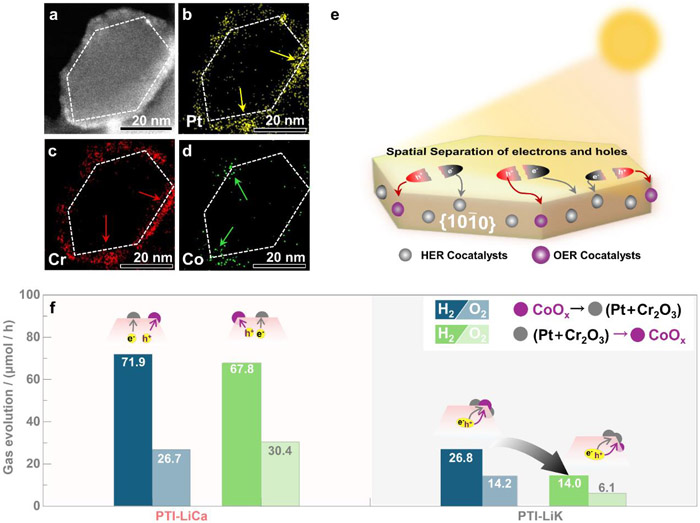Researchers from the Institute of Metal Research, Chinese Academy of Sciences (IMR, CAS), have developed a crystal structure engineering strategy that enables spontaneous exciton dissociation in polymeric carbon nitride semiconductors, significantly enhancing their photocatalytic water splitting efficiency.
Published in Nature Communications under the title "Spontaneous dissociation of excitons in polymeric photocatalysts for overall water splitting”, the study focuses on poly (triazine imide) (PTI), a promising low-cost polymeric semiconductor for overall water splitting (OWS). A key challenge with PTI and similar organic semiconductorsis their high exciton binding energy and lack of anisotropic charge transport, which causse photogenerated electrons and holes to remain bound together after light absorption, preventing them from participating in the water-splitting reactions.The team's breakthrough came from a simple but effective change to the synthesis process. By switching the conventional LiCl/KCl eutectic salt to LiCl/CaCl₂ during synthesis, they created unusual PTI nanoplates (PTI-LiCa) featuring in-plane lattice contraction and interlayer Ca²⁺ doping. The lattice mismatch between the CaCl₂ growth template and PTI basal planes induced compressive strain, while Ca²⁺ incorporation created an anisotropic electrostatic field.
The modified PTI-LiCa exhibited an exceptionally low exciton binding energy of 15.4 meV – well below the thermal energy (25.7 meV)of ambient heat at the room-temperature, – which allows spontaneous exciton dissociation into free charges. Ultrafast spectroscopic techniques confirmed adominant population of free carrier in PTI-LiCa compared to the bound excitons in conventional PTI.
Furthermore, spatially selective photodeposition experiments demonstrated anisotropic migration of electrons and holes to different crystal facets, achieving spatial separation of reduction and oxidation sites. This unique charge separation mechanism resulted in a 3.36-fold enhancement in photocatalytic overall water splitting activity compared to conventional PTI.
This work provides a general strategy for manipulating the photophysical properties of polymeric semiconductors. The combination of lattice strain and high-valence cation doping could be applied to various organic semiconductors, opening further potential for efficient solar energy conversion.

PTI nanoplates featuring lattice contraction and Ca doping. (Image by IMR)

Underlying mechanism for spontaneous exciton dissociation in PTI-LiCa.(Image by IMR)

Spatial separation and tracing of oxidation and reduction sites in PTI-LiCa. (Image by IMR)